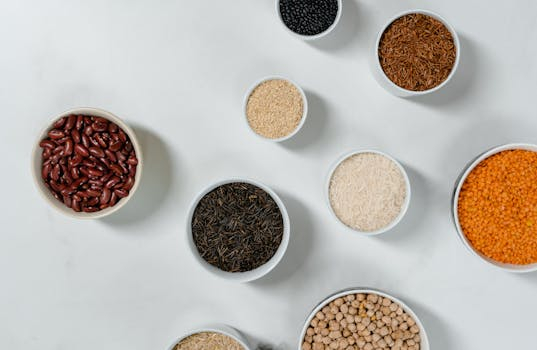Flexitarian Eating: The Rise of Plant-Forward Diets
Flexitarian eating, also known as semi-vegetarianism, is a diet that is gaining popularity around the world. This approach to eating involves primarily plant-based foods, with occasional inclusion of meat or animal products. In recent years, there has been an increasing trend towards plant-forward diets, where plant-based foods are the main focus and animal products are consumed in smaller quantities. This shift towards plant-forward eating is not only driven by health and environmental concerns, but also by the growing interest in ethical and sustainable food choices. Let’s delve deeper into the rise of flexitarian eating and why it may be the solution for a healthier planet and a healthier you.
The Flexitarian Diet
The flexitarian diet is a relatively new concept, first introduced by Registered Dietitian Dawn Jackson Blatner in her book “The Flexitarian Diet: The Mostly Vegetarian Way to Lose Weight, Be Healthier, Prevent Disease, and Add Years to Your Life”. This eating approach encourages individuals to consume mostly plant-based foods, such as fruits, vegetables, whole grains, legumes, nuts, and seeds, while still allowing for occasional consumption of animal products. The goal is not to completely eliminate meat or animal products from one’s diet, but rather to reduce their intake and focus on increasing plant-based food consumption.
The Benefits of Flexitarian Eating
The flexitarian diet offers a range of benefits, both for individuals and for the environment. Here are a few reasons why it’s gaining popularity:
Improved Health
Studies have shown that following a plant-forward diet has various health benefits, including reduced risk of heart disease, type 2 diabetes, and certain types of cancer. A flexitarian diet is rich in nutrients and vitamins, and significantly lowers the consumption of processed and high-fat foods, leading to better overall health.
Environmental Sustainability
The production of animal products has a significant impact on the environment, contributing to greenhouse gas emissions, water pollution, and deforestation. By reducing meat and animal product consumption, flexitarian eating can help lower your carbon footprint and contribute to a more sustainable future.
Cost-Effective
Eating a mainly plant-based diet is often more cost-effective than consuming large quantities of meat. Plant-based proteins, such as beans, lentils, and tofu, are generally cheaper than meat, making flexitarian eating a budget-friendly option.
The Flexitarian Lifestyle
Becoming a flexitarian is not about strict rules or deprivation; it’s about making sustainable and healthy choices. There are no set guidelines, so individuals can customize their diet based on their personal preferences and needs. For some, this may mean eliminating red meat, while others may choose to eat meat only once a week. The beauty of flexitarian eating is that it’s flexible and adaptable, making it more sustainable for long-term adoption.
Making the Switch to a Flexitarian Diet
If you’re considering adopting a flexitarian diet, here are some tips to help you get started:
Gradual Changes
Instead of making drastic changes to your diet, gradually incorporate more plant-based meals into your weekly routine. Start by having one meatless day a week and then slowly increase the frequency as you get comfortable with plant-based cooking and meal options.
Experiment with New Recipes
The internet is a wealth of information when it comes to plant-based recipes, so take advantage and explore new dishes. Try incorporating different grains, vegetables, and plant-based proteins into your meals to add variety and flavor.
Focus on Whole Foods
Avoid processed and packaged plant-based foods and instead focus on incorporating whole foods into your diet. These include fruits, vegetables, whole grains, legumes, nuts, and seeds. Not only are these foods more nutrient-dense, but they are also more environmentally friendly.
Listen to Your Body
Everyone is unique, and our dietary needs may differ. Pay attention to how your body feels and adjust your flexitarian diet to suit your individual needs. For some, consuming small amounts of animal products may offer additional health benefits, while others may thrive on a completely plant-based diet.
The Bottom Line
Flexitarian eating embraces the concept of balance, both for our bodies and for the planet. By focusing on plant-based foods and reducing meat and animal product consumption, we can improve our health and contribute to a more sustainable future. Whether you choose to adopt a fully plant-based diet or simply reduce your meat intake, the flexitarian approach offers numerous benefits and is gaining popularity for a reason. So why not give it a try and see how it can positively impact your life?









